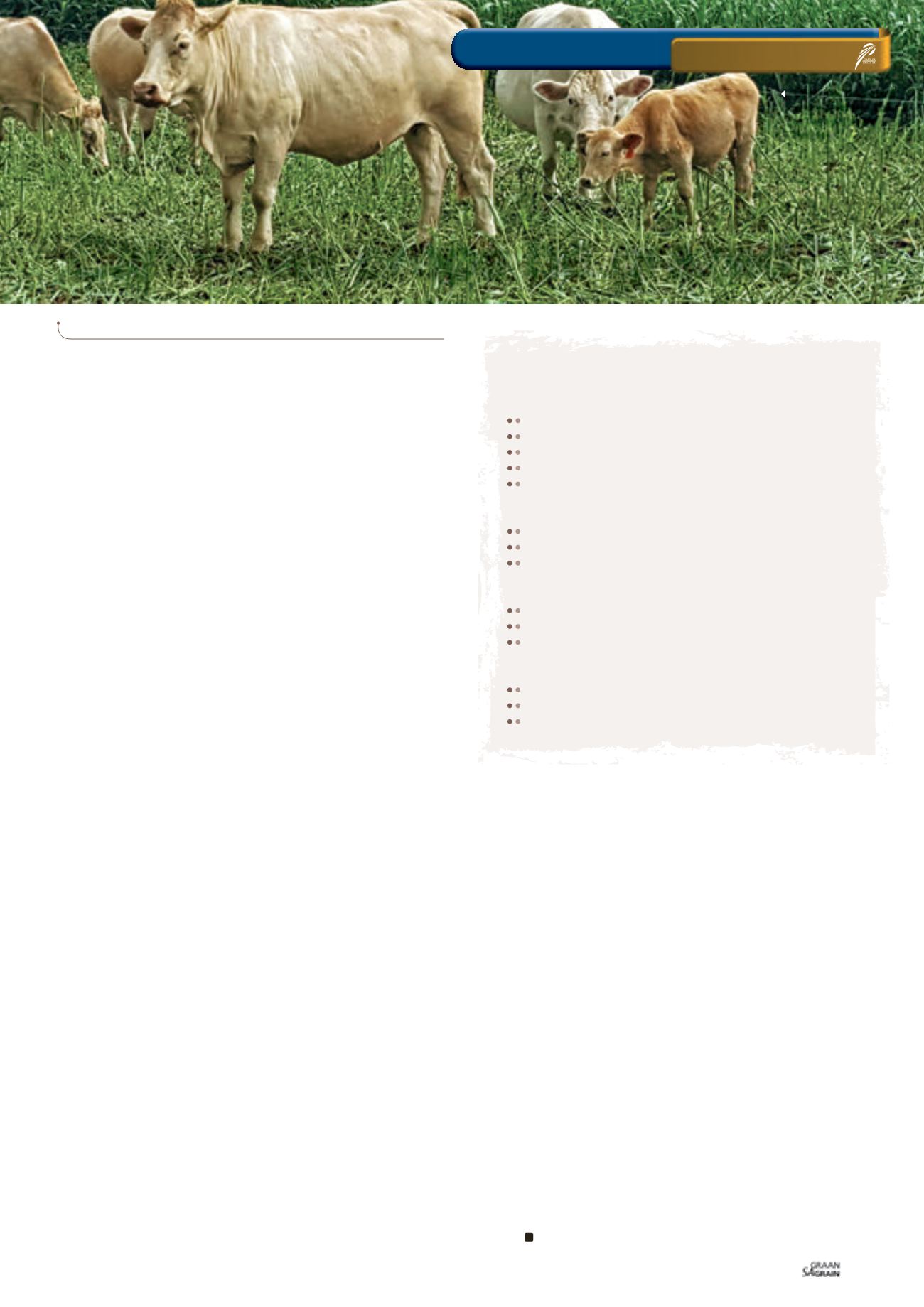

Can cover crops be grazed?
S
hould cover crops be grazed? The simple answer to this
is: Yes...but there are considerations. Like every farming
operation differs from the next, so do cover cropping and
grazing strategies. Therefore a targeted approach needs to
be developed. As they say – ‘If two farms are doing exactly the same
thing then one of them is getting something wrong.’
On a trip I made to the United States towards the end of last year
to look at cover cropping and to attend a soil health symposium,
I was encouraged to see that the cover cropping principles and
approaches being employed in South Africa were similar to what is
being done over there – albeit that generally, the local cover cropping
approaches are in their infancy.
Another observation was that more and more producers are utilis-
ing their cover crops as part of their fodder flow systems and are
exploiting the cover crops with livestock much more than we are
doing in South Africa.
At the outset the question of ‘How do I get started?’ is a difficult one,
as the answer is not the same for any two operations and specific
tactics have to be developed.
The primary purposes of adding the cover crops to the operation
must be identified, considering aspects like soil properties, soil
nutrients, pest management and biodiversity. (Utilisation by livestock
will be one of those principal reasons.) Other considerations based
on the resources available are seasonality, water availability, soil
type, livestock type and cost effectiveness.
There are any number of crop species which can be used as cover
crops and most of them have sufficient nutritional value to meet the
dietary requirements of most grazing livestock. Annual cover crop
mixes can make very nutritious and cost effective grazing crops.
When looking at the decisions of what to plant, divide the year into
the warm and cool months – warm from September to February and
cool from March to August. Look at the rainfall patterns which are
specific to your farm and plant the cover crops at a time when they
have the best opportunity to do as well as they can.
An adaptive grazing policy must be employed to get full benefits
– managed strip grazing with portable electric fencing ensures
complete utilisation as opposed to ‘luxury grazing’ where the
livestock only eat what is most palatable.
Stocking densities should be high and grazing periods short, so that
the livestock is forced to trample 50% of the forage available and
consume the other 50%. The trampled material acts as armour for the
soil and is in effect a mulch on the soil surface which promotes water
infiltration, decreases erosion, increases water holding capacity and
acts as a build-up of organic matter.
Common warm season grazing cover crops include forage sorghum,
peal millet or babala, cow peas and velvet beans. Mixes of these
cover crop species can be formulated in any number of ways. Forage
utilisation is easier to manage with diversity and the inclusion of
other warm season cover crops such as sun hemp and sunflowers,
which promote both the grazing and trampling effects.
Livestock should not graze cover crops under wet soil conditions
unless there is a lot of dry matter of plant material present (in excess
of 2 t/ha to 3 t/ha). We do not want to increase compaction or cause
pugging; to avoid this ensure adequate growth before introducing
livestock to the cover crop.
Cool season cover crop varieties which can be utilised by livestock
include black oats or Saia oats, white oats or forage oats, stooling
rye, triticale, barley, forage peas, vetch, tillage radish, forage radish,
forage rape, forage kale, chicory and clovers. The challenge with
a lot of areas in South Africa is the lack of rainfall during the cool
months, so timing is imperative when considering cool season cover
crops planted in autumn. Plant as soon as possible.
When livestock is used to graze cover crops not only does the
potential to improve soil health increase, but profitability of the land
increases as well. What the livestock take off in green material they
return through dung and urine, which in turn stimulates the soil
microbiology – a win-win situation for the microbes, the soil, the
animal and the producer.
In conclusion
The funny thing is that even though cover crops can do amazing
things for the soil and the bottom line, not everyone plants them.
Do you?
43
May 2017
ON FARM LEVEL
Livestock
Product information
SIMON HODGSON,
general manager: Cover Crops, AGT Foods Africa
Primary purposes for cover cropping
Soil properties
Erosion control
Increase water infiltration
Reduce compaction
Increase aggregate stability
Build organic matter
Soil nutrients
Nitrogen fixation
Nitrogen scavenging
Phosphorus scavenging
Pest management
Weed control
Nematode control
Disease control
Biodiversity
Forage/livestock
Attract helpful insects
Attract game
Cover crops grazed
and trampled – due
to high stocking
densities

















